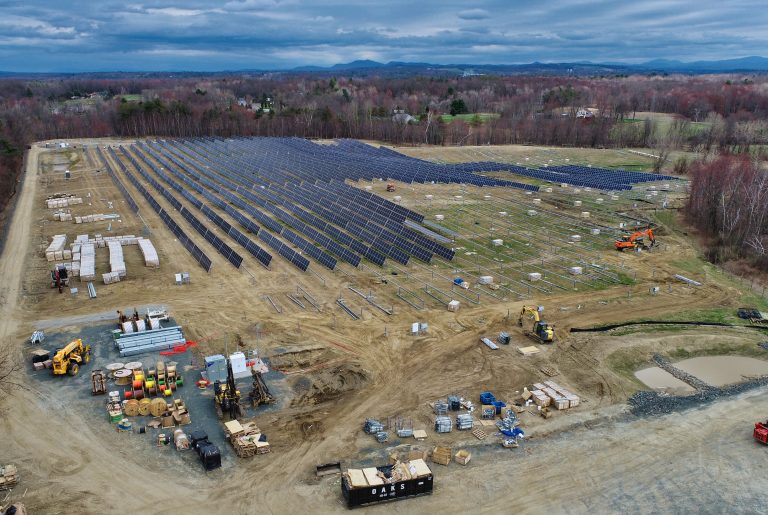Revolutionizing Building Facade Inspection with Drones
Still dealing with those old-fashioned building exterior checks? The thought of scaffolding, closing sidewalks, and dangling workers is enough to cause a headache. A thorough building facade inspection with drones completely changes all of that.
This isn’t some futuristic idea; it’s happening right now across New York City, Massachusetts, and the entire Northeast. Property and construction managers often turn to drones for their building inspections these days.
Let’s find out why.
Why Traditional Facade Inspections Are Falling Behind
Let’s be honest, traditional inspection methods are a huge pain. Hanging stages or building scaffolding takes weeks of planning and execution. This is time you might not have, especially when facing strict compliance deadlines.
Manual inspections, including methods like rope access, require skilled technicians to be on the facade physically. While these professionals are highly trained, the process is slow and inherently dangerous. This method scratches the surface; a full aerial survey captures the entire landscape.
Expenses might quickly get out of hand. You have to pay for equipment rental, the specialized labor for setup, and the necessary permits. Forget about an easy win for these permits. In a jam-packed spot like New York City, getting one is notoriously tricky.
Then there’s the massive disruption. Your tenants get annoyed by the noise and blocked windows. Pedestrians and local traffic get rerouted, frustrating the whole neighborhood and reflecting poorly on your property management.
Beyond the cost and hassle, inspection safety is the biggest concern. Working at high elevations is always dangerous. Even with every safety measure in place, serious risks are an inherent part of the job. Imagine the pain of a bad injury or the stress of a big lawsuit after an accident. A safer option means you avoid all that trouble.
The New Standard for Building Facade Inspection with Drones
So what’s the alternative? A licensed pilot stands safely on the ground or a nearby rooftop. They operate a small, powerful unmanned aerial vehicle that flies a pre-planned route around the exterior of your building.
Drones equipped with smart sensors and cameras capture incredibly clear pictures from above. They capture thousands of images and videos of every single inch of your building envelope. This operation hums along silently, finishing up quickly while catching every single detail.
The Technology That Makes It Possible
The magic isn’t just the drone itself, but the technology it carries. Most inspection drones use high-resolution RGB cameras that capture stunningly clear images. They show you everything up close: tiny fissures, concrete that’s flaking off, or mortar that’s starting to crumble.
These are the kinds of structural issues a human eye might miss from several feet away during manual inspections.
Besides their regular lenses, many drones pack thermal cameras that let them peer through smoke or darkness. They ignore light and detect heat, revealing temperature differences throughout a building’s exterior. They can instantly spot areas where moisture is getting behind the facade or where your building is losing energy due to poor insulation, something impossible to see with the naked eye.
Some projects even bring in LiDAR, a system named for Light Detection and Ranging. It shoots out harmless laser beams to create an extremely accurate 3D model of your building. You can see every little shift or deformation in a structure. This system tracks those changes over time with incredible accuracy.
A Safer Way to Inspect
The safety benefit of a drone facade inspection is probably the most obvious. With drone inspections, your crew stays on the ground. This instantly makes job sites much safer. It eliminates the risk of falls, a leading cause of death in construction.
The work is completed with fewer resources and fewer personnel on site, resulting in a smaller, more controlled work zone. This reduces the chances of accidents involving the public or property damage.
Minimizing potential hazards directly results in more affordable insurance policies and a diminished degree of legal accountability. A strong safety program is easier to maintain when you remove the most significant potential hazards.
Saving You Time and Money: The Real Benefits

Let’s talk about the impact on your budget and timeline. A traditional facade inspection on a mid-sized building can take weeks to complete. A building facade inspection with drones can often be finished in a single day.
Think about the cost savings from that alone. Forget about renting those big lifts or setting up scaffolding. You’ll save money on workers and skip those annoying fees for closing off streets.
And you’ll find the full details you receive really pay off. You’ll quickly see which fixes matter most thanks to a digital report filled with annotated pictures and heat data. Catching little issues early stops them from turning into massive, expensive breakdowns. That keeps your critical systems running well.
Complying with Local Laws: FISP in New York City & Beyond
If you own or manage a building in the Northeast, you know local laws are a big deal. For example, in New York City, you must follow the Façade Inspection Safety Program (FISP). You’ll find that any building over six stories high now needs regular safety reviews.
Serious fines and penalties will follow Go against these rules. Drones now make tackling those FISP rules much quicker and simpler. Drone inspections provide engineers with the exact pictures they need to assess a building’s condition and prepare their official reports.
Recognizing the benefits, New York City Mayor Eric Adams has actively promoted the use of drones. During his term, the government significantly increased drone activity as part of the ‘Get Stuff Done’ agenda, aiming to make city processes more efficient and safer.
As the New York City Mayor, Eric Adams highlighted how drone technology can speed up facade inspections, clearing backlogs and improving safety. A detailed drone report submitted to local authorities is often more thorough than what can be gathered manually.
The Federal Aviation Administration (FAA) also has rules for flying drones commercially. Any legitimate drone service provider must have pilots certified under the FAA’s Part 107 rules. This is non-negotiable and something you should always verify.
In states like Pennsylvania and Connecticut, local ordinances might also apply. A professional drone services company understands this legal landscape. They know how to get the right permissions for conducting inspections legally and safely in your area.
What to Look for in a Drone Inspection Partner
So, you’ve decided to explore using drones for your next facade inspection. With so many choices, what specific criteria do you use to determine which company truly aligns with your goals and expectations? True value comes from professional insight, not merely a drone operator.
Choose a partner who doesn’t just promise, but has the proven background actually to deliver useful solutions and measurable progress. Selecting the best drone inspection team significantly impacts the quality of your project. Here are key things to look for:
- Certifications and Insurance. First, confirm their pilots have current FAA Part 107 certifications, the baseline legal requirement. Also, check their insurance; a professional company will carry significant liability insurance to protect you, your property, and the public.
- Relevant Experience. You should ask them what projects they’ve finished that are similar to your building. Have they inspected high-rises in a dense urban environment like New York City? Do they have a portfolio of work in construction or for critical infrastructure?
- Technological Capability. Exactly what aerial vehicles do they operate? Ask if they offer thermal imaging, high-resolution cameras, or LiDAR mapping, and how these tools can benefit your specific inspection needs.
- Deliverable Quality. Understand what you will get at the end of the project. A good partner doesn’t just give you a folder of images; they provide a structured report. You’ll find clear pictures and highlighted areas of concern here.
- Understanding of Local Laws. A good firm offering inspection services will understand local regulations, like FISP. The company offering data must clearly show how its information helps engineers and architects meet all building codes and regulations.
The quality of the final report is just as important as the quality of the flight. You’ll finally gain real control over your maintenance schedule and exactly what you spend on it. Pick the right ally, and you’ll spot those little snags long before they become dangerous safety threats.
Conclusion
The days of slow, expensive, and dangerous facade inspections are over. You can now protect your buildings far more effectively with current technology. It means your team stays out of harm’s way, you’ll see a noticeable drop in spending, and you’ll understand precisely what your property needs to stay strong.
Switching to a building facade inspection with drones isn’t about chasing trends. Investing here is a sharp business move. It means a safer environment, fewer expenses hitting your ledger, and smoother property administration.




